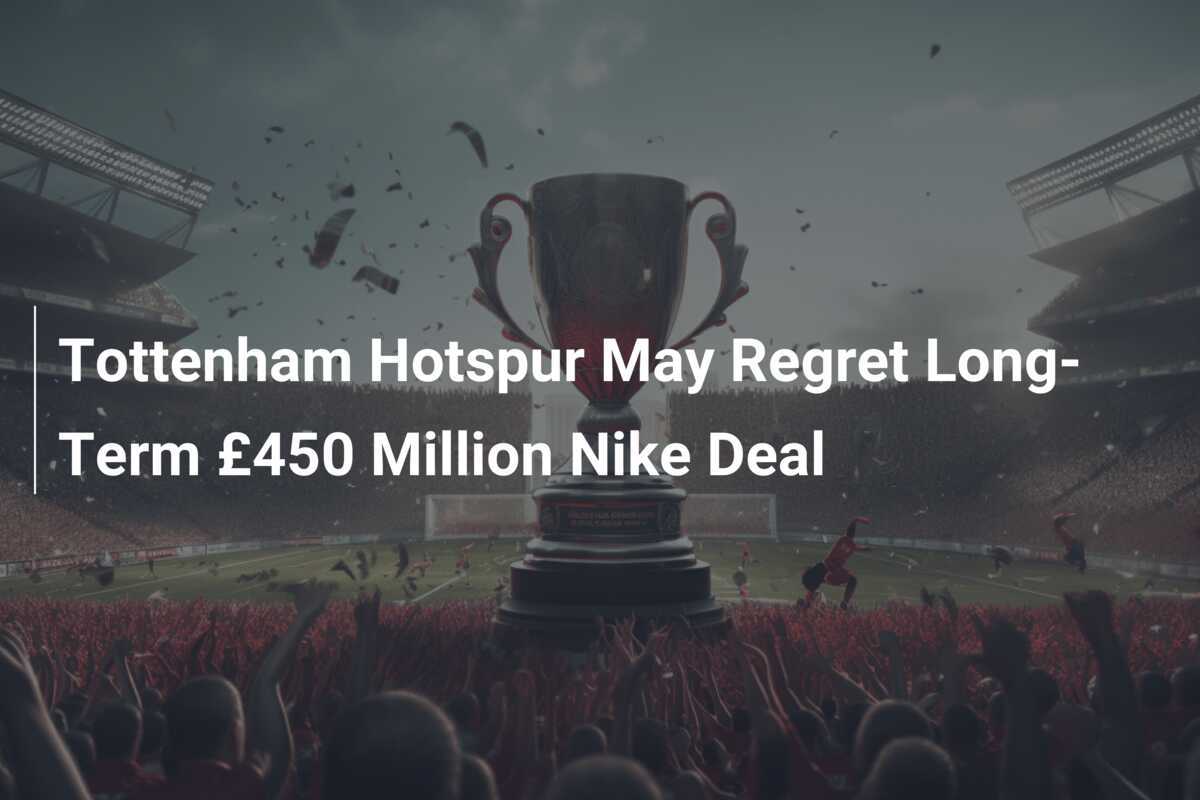In 2018, Tottenham Hotspur sealed a substantial 15-year partnership with American sportswear titan Nike, which was hailed as a major step forward for the club. The contract, purportedly worth around £30 million annually, amassed a total value of £450 million, a figure that once seemed modest when compared to the lucrative pursuits of some of Spurs’ rivals.
This lucrative agreement not only provided long-term financial security but also arrived at a critical juncture when the club had undertaken hefty borrowing to finalize the construction of the Tottenham Hotspur Stadium. Securing a reliable revenue stream from a prestigious brand like Nike has been a reassuring factor for lenders, ensuring that the club can access credit whenever needed.
Speaking to the Tottenham Hotspur Supporters Trust in 2018, Chairman Daniel Levy stressed how the valuation of such deals differs for Spurs. He pointed out that while certain rival clubs chose to offload merchandising rights—adding a significant amount to their total revenues—Spurs kept those rights in-house. The chairman also acknowledged that the club's shirt sales lagged behind those of behemoths like Liverpool and Manchester United, which directly influenced the revenue potential from kit partnerships.
Nevertheless, this decision to partner with the globe’s leading sports manufacturer made sense. Nike’s ability to deliver at scale was imperative for Spurs, especially considering their ambitions to cater to burgeoning demand in regions like East Asia, a market that has surged in popularity, largely thanks to star player Heung-min Son.
However, there lies a potential pitfall: the risk of leaving financial opportunities on the table if the kit partnership market continues its upward trajectory. Recent reports suggest Liverpool is set to transition from Nike to Adidas next season, with talks of a figure around £60 million, potentially swelling to £90 million with performance incentives. While this switch is not structured over the same lengthy period as Spurs’ agreement with Nike, it marks a significant financial uplift for the Merseyside club—one that Nike deemed unfeasible to match.
Manchester United, on the other hand, boasts a bumper £90 million-per-year deal with Adidas, which, while packed with performance-related contingencies, secures substantial backing. Arsenal and Manchester City are also enjoying lucrative arrangements, with Adidas and Puma respectively, earning around £75 million and £65 million per season.
The current predicament for Spurs is striking: Nike now has a limited portfolio comprising only Spurs and Chelsea among the Premier League’s ‘big six’. With Liverpool's exit to Adidas, Nike may be less inclined to reduce its stakes within England’s premier football league.
The implication is clear: Nike would have had greater motivation to elevate their offers, aiming to maintain a solid presence amid the Premier League’s heavyweights. The international appeal of the league, coupled with high merchandise sales associated with its top clubs, probably meant that Spurs could have benefitted had negotiations turned favorable.
However, opportunities to renegotiate favorable terms may have passed for Spurs. The wisdom in establishing a long-term guaranteed revenue stream rings true; however, it simultaneously curtails the club's ability to capitalize on the growing market. While rivals have successfully secured lucrative new kit deals over the past two years, Spurs find themselves at a loss, having inadvertently foregone potential earnings in the short to medium term.
In summary, Spurs have cast a cautious glance over the horizon, securing their financial footing for the next 15 to 20 years. Such foresight shields them from unpredicted market fluctuations, even if it means watching rival clubs throw themselves into a rapidly bulging kit partnership market.
